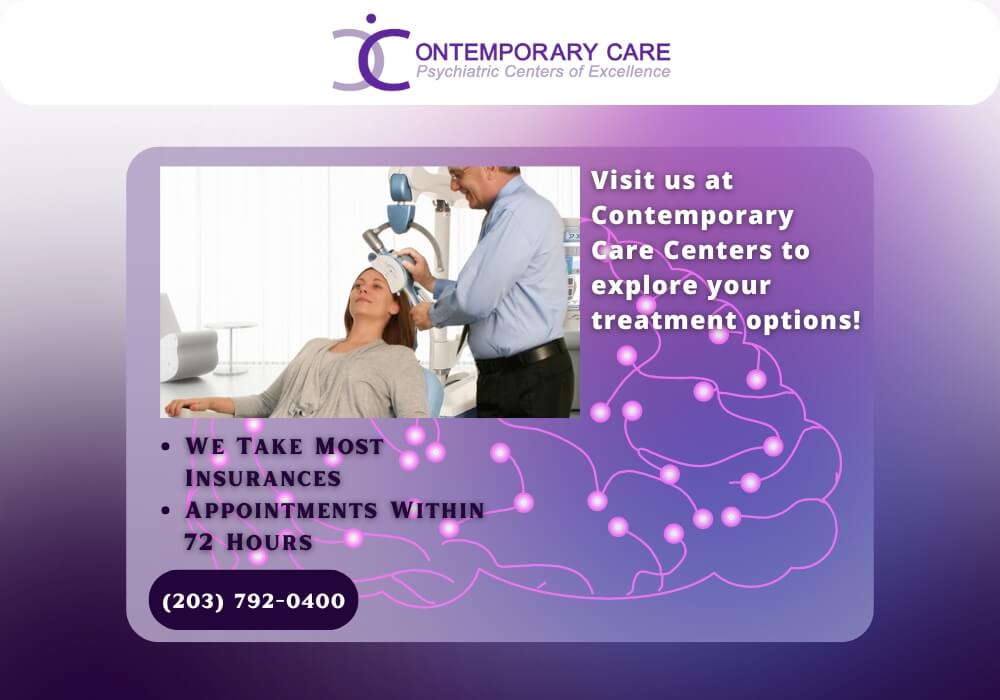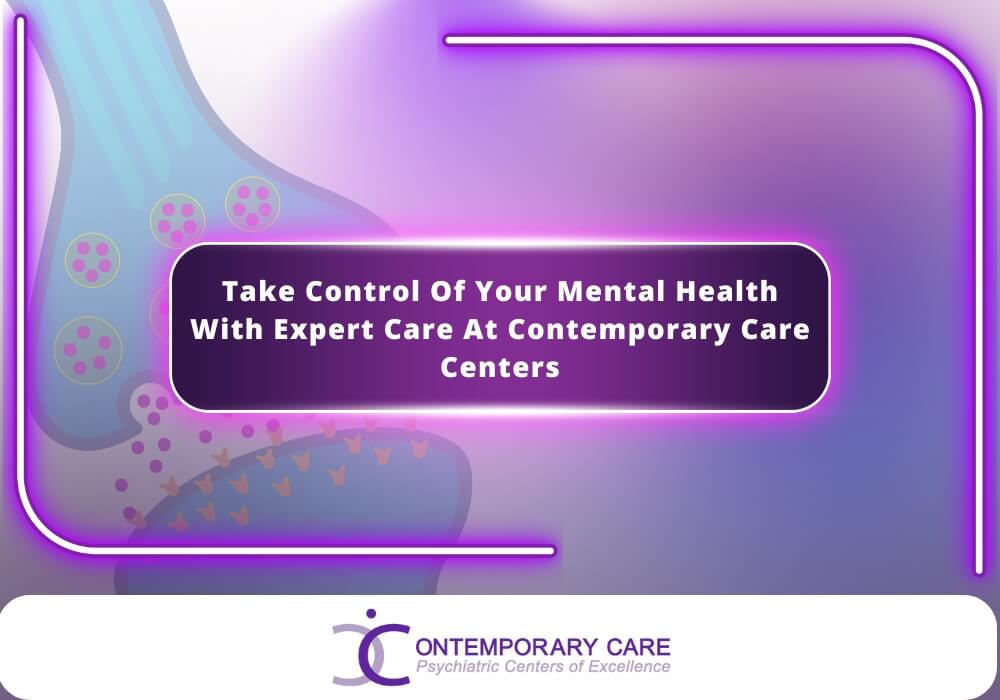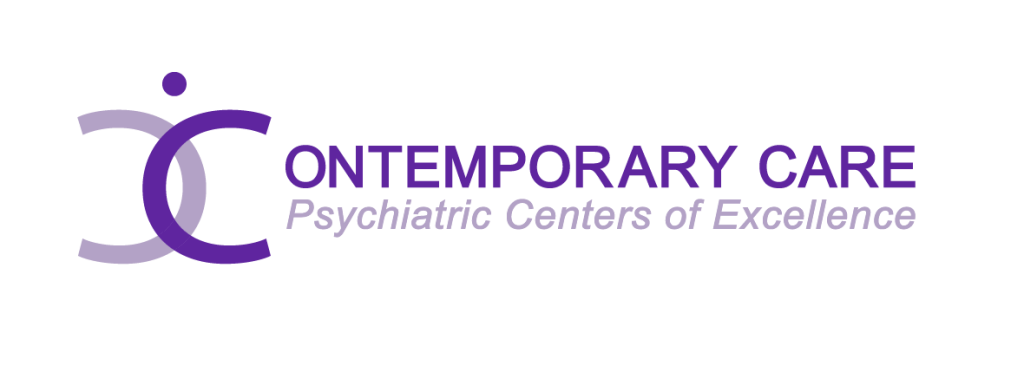Curious About TMS Therapy? Discover If This Groundbreaking Depression Treatment Is Truly Painful or Just Misunderstood!
Transcranial Magnetic Stimulation (TMS therapy) is a non-invasive treatment for many neurological disorders and psychiatric disorders, primarily used to help individuals struggling with depression. When other forms of treatment have not been effective.
A common question that arises for those considering what is TMS therapy is whether the procedure is painful.
Many people worry about discomfort during their sessions, but the experience is often much more manageable than expected.
What Is TMS Therapy?
TMS stands for Transcranial Magnetic Stimulation. It’s a non-invasive medical treatment used to treat depression.
Unlike medications, TMS therapy uses magnetic fields to move brain cells and stimulate areas of the brain that are underactive in people with depression to improve depression symptoms in there.
It’s a very targeted and focused treatment for people who with depression symptoms haven’t responded to other therapies. TMS treatment is for major depressive disorder.
How Does TMS Work?
During a TMS therapy session, a device with a magnetic coil is placed near your head. The coil sends painless magnetic pulses to the mood-regulating areas of your brain, specifically the prefrontal cortex, which is often less active in people with depression.
These magnetic pulses stimulate brain activity and improve mood and cognitive function. Treatment-resistant depression usually involves multiple sessions over several weeks.
What Is TMS Used For?
TMS is used to treat depression, specifically for people who haven’t found relief through antidepressant medication, or therapy. It’s a drug-free alternative antidepressant medication that can reduce symptoms of depression without the side effects of antidepressants.
It’s also an antidepressant medication being used for anxiety, bipolar disorder and PTSD, and pain medicine but most commonly for depression.
Is TMS Therapy Painful?
When it comes to TMS therapy, the question is always whether it is painful. The excellent news is that deep brain stimulation or TMS therapy is a noninvasive procedure that is not painful for most patients.
The treatment involves using magnetic pulses to stimulate specific areas of the brain, and while that sounds a bit scary, it’s a very non-invasive treatment procedure. Patients report no pain from deep-brain stimulation therapies, magnetic stimulation, therapies, or deep-brain stimulators itself, just mild sensations during the session. TMS therapy is designed to be comfortable so that you may feel slight tapping or tingling on your scalp, but it is rarely painful.
Mild, Not Painful
While TMS therapy is not painful, some patients experience mild discomfort. This discomfort is usually a light tapping or tingling on the scalp as the magnetic pulses work on nerve cells in the motor cortex. It’s important to note this is not pain; the sensation is tolerable and temporary.
For many, it feels like a light knock or vibration on the head but nothing intense enough to worry about. The discomfort usually goes away as patients get used to the treatment. So, while you may feel something, it’s not painful.
What Are Common Sensations During TMS?
The sensations are part of the brain stimulation process and brain stimulation itself is non-invasive, so TMS is a well-tolerated treatment for chronic pain for most people.
Tapping And Tingling On The Scalp
During TMS treatment, you will feel a tapping or tingling on your scalp. The technician can adjust the frequency and intensity of the tapping to make you comfortable. As part of TMS treatment, these sensations are normal and not a cause for concern as they are mild and temporary.
Clicking Or Tapping Sounds
You will hear a distinct clicking or tapping sound during TMS treatment. This is from the magnetic coil rapidly releasing a magnetic field that pulses to the brain. Some people describe it as a tapping pen or a gentle drumbeat.
It’s not loud enough to be uncomfortable, but earplugs are recommended to make it more comfortable. Now that you know what TMS therapy is, you can relax, as these sounds are part of the process and not harmful or painful to your other mental health conditions.
Temporary Nature Of Sensations
The sensations during TMS during treatment sessions, such as tapping on the brain-involved scalp or clicking sounds, are temporary and will stop after the session. For most patients, the mild discomfort, if any, will go away quickly after treatment.
Now that you know what TMS therapy is and the temporary nature of these sensations, you can rest assured there’s no long-term effect.
Managing Discomfort During TMS Therapy?
Adjusting the position of the electromagnetic coil can make a big difference. By working with the practitioner, you can find a position that minimizes scalp discomfort without compromising the treatment.
Adjusting The Magnetic Coil For A Comfortable Fit
During TMS therapy, the electromagnetic coil that is placed on the scalp to deliver the magnetic pulses. Sometimes during deep TMS, you can feel discomfort if the coil is not in the correct position or is too tight.
Knowing what deep TMS in therapy is and how it works will help ease your concerns so you can have a more personalized and comfortable experience.
Short Breaks During The Session
Some people may feel uncomfortable or fidgety during their TMS therapy session, especially during the first few sessions. Taking short breaks can help with that. These breaks give you time to adjust to the sensations or to mentally relax before continuing the depression TMS treatment schedule. Although the TMS treatment session is quick, the pauses between the magnetic stimulation pulses can make the whole experience smoother.
Intensities Adjusted To Patient’s Sensitivity
Healthcare professionals monitor the intensity of the magnetic field and magnetic stimulation used during TMS therapy throughout the session. They can customize the way they perform TMS treatment to your sensitivity by adjusting the magnetic stimulation and field pulses.
Side Effects Of TMS Therapy?
With its long-term benefits, TMS has some temporary side effects. However, these side effects usually disappear as the body gets used to tms, and most people feel normal after treatment.
Headaches After TMS Therapy
The most common side effect of the TMS machine is mild headaches. These headaches are usually in the area where the magnetic pulses are applied. For most people, they are manageable and short-lived.
Over-the-counter pain relievers like ibuprofen or acetaminophen can help. Note that headaches tend to decrease as the TMS treatment sessions go on. They usually go away within a few hours of each session. Most people say it’s a mild headache compared to other treatments.
Mild Scalp Discomfort During TMS
Another side effect of TMS is mild scalp discomfort or tingling where the coil is placed. This is caused by the magnetic pulses stimulating the neurons under the scalp to stimulate nerve cells. The pain is bearable and goes away after the TMS session is over.
Adjusting the coil or the pulses can help to stimulate nerve cells and reduce this discomfort. Most people find symptom relief and it goes away as they get used to the treatment. Overall, it’s a minor and temporary side effect.
Fatigue After TMS
Fatigue is a side effect some people experience after TMS. While not as common as anxiety symptoms such as headaches or scalp discomfort, some people may feel more tired after their sessions of magnetic stimulation. This fatigue is mild and doesn’t interfere with daily activities. The brain’s response to the magnetic stimulation causes this feeling of tiredness.
How Does TMS Compare To Other Treatments In Terms Of Pain?
Compared to standard depression treatments, TMS therapy is a lot gentler and doesn’t require surgery or involve sedation or seizures, than other depression treatments making it less intimidating.
TMS Therapy: A Non-invasive Option
TMS therapy uses magnetic pulses to target specific areas of the brain, primarily for treating depression. Unlike ECT, TMS doesn’t involve anesthesia, cuts, or electrical shocks. Most people feel a tapping or tingling on their scalp during treatment.
Since it’s non-invasive, TMS therapy has fewer side effects, and you can return to your routine immediately. It’s a pain-free and easy option for many other serious, mental health disorders and conditions and disorders and conditions without treatment.
Electroconvulsive Therapy (ECT): An Invasive Procedure
ECT works differently from standard treatments than TMS therapy. It uses electric currents to trigger a controlled seizure in the brain. This means ECT requires anesthesia and muscle relaxants, so patients need to be sedated. Side effects can include memory loss, confusion, and headaches. While ECT is often effective for severe cases of depression, it’s much more invasive.
Is TMS Therapy Right For You?
TMS therapy is safe and FDA-approved, making it a viable choice for people seeking new avenues for managing mental health issues.
TMS therapy is particularly beneficial for individuals struggling with depression, especially those who haven’t responded to traditional treatments like medication and talk therapy. Patients who experience side effects from antidepressants or prefer a non-invasive approach may find TMS an attractive option.
Additionally, those who want to avoid the long-term use of medication can explore this alternative. TMS therapy offers a glimmer of hope for individuals feeling stuck in their journey toward mental wellness.
Candidacy For TMS Therapy
While TMS therapy is a promising option, not everyone qualifies for the treatment.
Candidates for TMS Therapy:
- Ideal for individuals with treatment-resistant depression (those who haven’t improved after trying at least two antidepressants).
- Suitable for people who cannot tolerate medication side effects.
- Not recommended for those with metal implants near the head or those prone to seizures.
- A thorough consultation with a medical professional is necessary to determine eligibility.
TMS Therapy Benefits:
- An excellent alternative for individuals who haven’t found success with traditional treatments.
- Provides relief without the concern of enduring pain throughout the sessions.

Take Control Of Your Mental Health With Expert Care At Contemporary Care Centers
At Contemporary Care Centers, we specialize in providing personalized mental health solutions, including innovative treatments like TMS therapy. Whether you’re seeking relief from depression, anxiety, or other mental health challenges, our compassionate team of specialists is dedicated to helping you regain control of your life.
With cutting-edge technology and a focus on patient-centered care, we offer customized treatment plans tailored to your unique needs. Don’t wait—schedule a consultation today and take the first step toward a healthier, happier you. Visit us at Contemporary Care Centers to explore your treatment options!
FAQs
1. Is TMS Therapy Painful?
No, TMS therapy is generally not painful. Most patients only experience mild sensations like tapping or tingling on the scalp during the sessions.
2. How Long Does A Tms Therapy Session Last?
Each TMS session typically lasts between 20 to 40 minutes, depending on the treatment plan and individual response.
3. Are There Any Side Effects Of TMS Therapy?
The most common side effects are mild headaches and scalp discomfort, but these are usually temporary and manageable.
4. How Many TMS Therapy Sessions Are Needed?
Most patients require around 20 to 30 sessions, spread over several weeks, to see significant improvements in their symptoms.
5. Who Is Not Eligible for TMS Therapy?
TMS therapy is not recommended for individuals with metal implants near the head or those prone to seizures. A medical consultation is necessary to determine eligibility.



